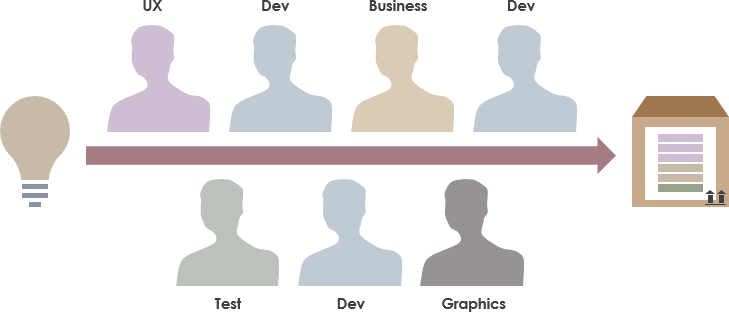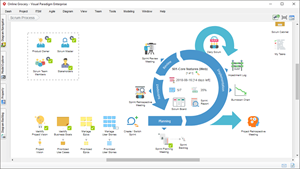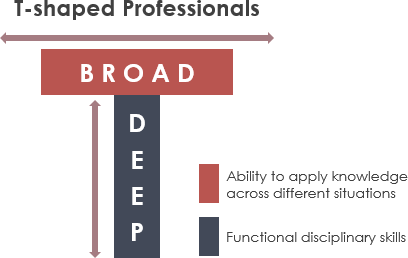Traditionally, a project is organized around component teams (i.e. UX, Dev, Business, Tester, and …), any release that requires a range of component expertise will need to involve multiple component teams. Typically, different teams will have different sets of priorities, which inevitably leads to bottlenecks in the product release cycle.
According to Wikipedia, a cross-functional team is a group of people with different functional expertise working toward a common goal. One of the best ways to improve the quality of your team is to make it cross functional. A cross functional team has all the necessary skills to turn an idea into a working product.
The Scrum Guide indicates “The Scrum Team consists of a Product Owner, the Development Team, and a Scrum Master. Scrum Teams are self-organizing and cross-functional. In contrast to the component team approach, a cross functional teams are groups consisting of people from different functional areas of the company. – it should be formed not only with technical specialists (Back-end, Front-end developers, QA engineers, etc.), but also consists of member like Business Analysts, Marketing and UX specialists or anyone else taking an active part in the project.


Best Scrum Software Every Project Needs
A powerful scrum software that supports scrum project management. It features scrum tools like user story map, product backlog management, sprint backlog management, task management, daily scrum meeting, sprint planning tool, sprint review tool, sprint retrospective tool, burndown, impediment, stakeholder and team management.
Cross functional teams are one of the key ingredients that help make scrum teams successful and productive. Cross functional teams have more flexibility, can react faster to changing needs, and can better handle ongoing support and maintenance.
According to Mike Cohn, “Perhaps the most prevalent and persistent myth in agile is that a cross-functional team is one on which each person possesses every skill necessary to complete the work. This is simply not true … A cross-functional team has members with a variety of skills, but that does not mean each member has all of the skills”
In reality, Agile cross functional teams not only means that the team itself is cross functional, but also that each team members can preferably play multiple roles as well. Being a specialist does not mean a member know one thing at the expense of knowing other things, ideally, the talent profile should be T shaped, in that he / she have depth in one area of expertise, and breadth across other areas.

The benefits of cross functional team improve coordination across functional areas, increased innovation in product and process, and reduced development cycle times for feedback from key customer touchpoints. A cross-functional team eliminates most, if not all, of the conflicting priority issues because everyone on the team has the same priority to achieve the common goal.
| About Visual Paradigm |
 Visual Paradigm help organizations stay competitive and responsive to change faster and better in today’s fast changing environment. Our award-winning products are trusted by over 320,000 users in companies ranging from small business, consultants, to blue chip organizations, universities and government units across the globe. It enables organizations to improve business and IT agility and foster innovation through popular open standards and process frameworks.Visual Paradigm, a killer Agile feature in 2018, introduced Scrum Process Canvas for automating the way a Scrum team to create, manage and deploy software application that empowers the team to continuously improve their performance at unprecedented speed and scale. Visual Paradigm help organizations stay competitive and responsive to change faster and better in today’s fast changing environment. Our award-winning products are trusted by over 320,000 users in companies ranging from small business, consultants, to blue chip organizations, universities and government units across the globe. It enables organizations to improve business and IT agility and foster innovation through popular open standards and process frameworks.Visual Paradigm, a killer Agile feature in 2018, introduced Scrum Process Canvas for automating the way a Scrum team to create, manage and deploy software application that empowers the team to continuously improve their performance at unprecedented speed and scale.
Manage the Entire Scrum Process in One Page
|